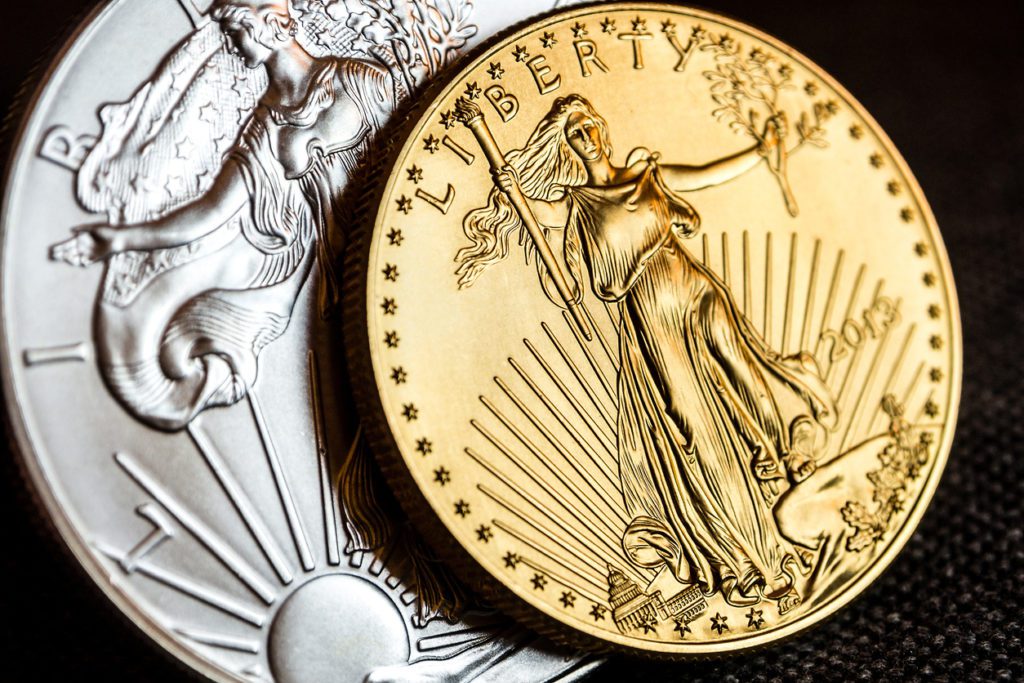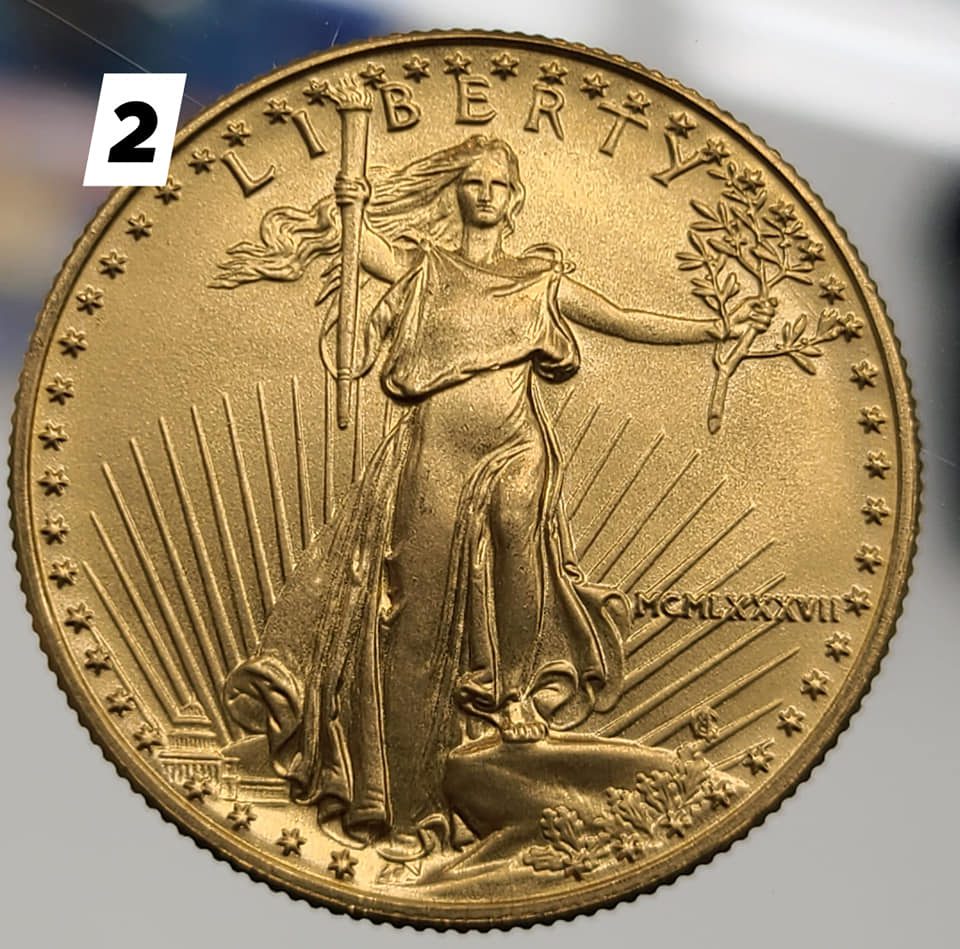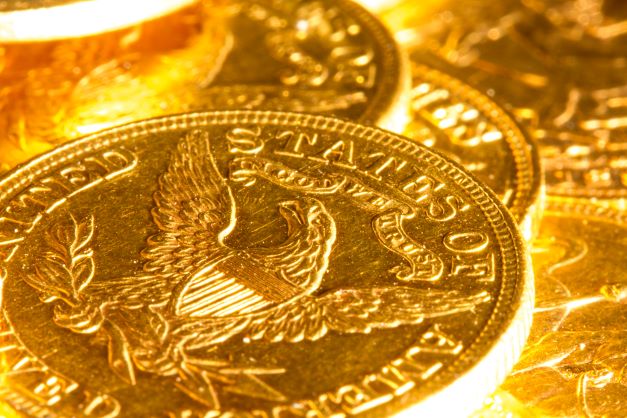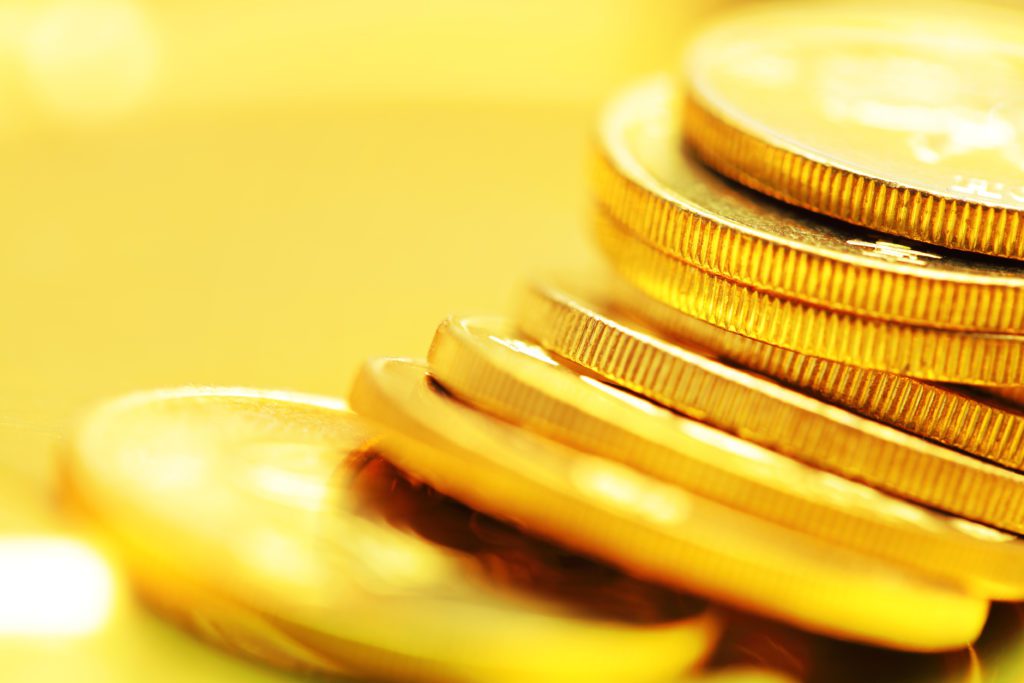Gold coins, gold bars, gold bullion, and scrap gold jewelry can all be liquidated for quick cash. The following steps might help, as you make decisions to sell gold coins for the money you need to meet an unexpected bill.
Determine the value of the gold: The first step is to determine the value of the gold by getting an appraisal. This can be done by a professional appraiser or reputable gold dealer.
Decide on the selling method: The next step is to decide on the selling method. The options include selling to a gold dealer, selling to a pawnshop, or selling online.
Research potential buyers: If selling to a gold dealer or pawnshop, research potential buyers to ensure they are reputable and offer fair prices. Check their reviews, ratings, and reputation with organizations like the Better Business Bureau.
Negotiate the price: Once potential buyers have been identified, negotiate the price. If selling to a gold dealer or pawnshop, be prepared to negotiate and walk away if the price is not fair.
Complete the sale: After a price has been agreed upon, complete the sale. If selling to a gold dealer or pawnshop, be sure to get a receipt or invoice that includes the details of the sale.
Consider tax implications: If the sale of the gold results in a profit, consider any tax implications and report the sale as required by law.
Ensure personal safety: When meeting with potential buyers in person, take precautions to ensure personal safety. Meet in a public place or bring a friend or family member along.
By following these steps, you can liquidate your personal gold treasures and receive a fair price for your valuable assets.
Maybe you don’t want to sell your gold, but you would rather pawn it so you can pick it up after the loan terms are paid in full.
The process for obtaining pawn loan for gold coins is quick and easy.
Gather the gold coins: The first step is to gather the gold coins that will be used as collateral for the loan. The coins should be in good condition and free of any damage or alterations.
Find a pawn shop: The next step is to find a reputable pawn shop that accepts gold coins as collateral for loans. Research potential pawn shops and read reviews and ratings to find a trustworthy lender.
Have the coins appraised: Once a pawn shop has been identified, have the gold coins appraised to determine their value. The pawn shop will use this value to determine the loan amount.
Negotiate loan terms: After the value of the coins has been determined, negotiate the terms of the loan. This includes the loan amount, interest rate, and repayment schedule.
Complete the paperwork: Once the loan terms have been agreed upon, complete the paperwork. This includes a loan agreement and a receipt for the gold coins.
Receive the loan: After completing the paperwork, the pawn shop will provide the loan amount in cash. The loan amount is typically a percentage of the appraised value of the gold coins.
Repay the loan: To avoid losing the gold coins, it is important to repay the loan according to the agreed-upon schedule. If the loan is not repaid, the pawn shop may sell the gold coins to recoup the loan amount.
By following these steps, you can obtain a pawn loan on your gold coins and receive cash in exchange for the valuable collateral. However, it is important to carefully consider the terms of the loan and ensure that the loan can be repaid according to the agreed-upon schedule to avoid losing your valuable gold coins.

Gold Coins May or May Not have Different Features
High gold content: Gold coins are made primarily of gold, which gives them their unique color and value. The gold content of a coin is usually expressed in karats or fineness, which refers to the purity of the gold in the coin.
Limited mintage: Gold coins are often minted in limited quantities, which makes them rare and valuable. Many gold coins are also considered collector’s items, which further increases their value.
Different sizes and weights: Gold coins come in different sizes and weights, depending on their country of origin, denomination, and minting process. Some coins are small and lightweight, while others are large and heavy.
Unique designs: Gold coins often have unique designs that reflect their country of origin, historical events, or cultural significance. The designs may be intricate, detailed, or include special features, such as raised edges or inscriptions.
Security features: Some modern gold coins have security features that make them difficult to counterfeit, such as microprinting, holograms, or unique serial numbers.
On the other hand, gold coins typically do not have the same denominational values as regular currency, and they are not typically used as a means of exchange in day-to-day transactions. They are instead seen as a store of value or a way to invest in gold. Additionally, gold coins are not legal tender in all countries, and their value may be subject to fluctuations in the gold market.

Gold Coins With Roman Numerals
Roman numerals on a gold coin usually indicate the year of production or minting of the coin. Each Roman numeral corresponds to a number, and when combined, they represent a specific year. For example, “MMXXI” would be the Roman numeral representation of the year 2021.
Roman numerals have been used on coins for centuries and are still used on some modern coins, particularly commemorative or collector’s coins. They are considered a traditional and elegant way to display the year of production or minting, and they are often found on coins from countries with a historical connection to the Roman Empire or Latin language.
The presence of Roman numerals on a gold coin typically does not increase its value, as it is a common way to represent the year of production or minting. The value of a gold coin depends on various factors, such as rarity, condition, historical significance, and collector demand.
However, there are some exceptions where the specific coin with Roman numerals may have additional historical significance, making it more valuable to collectors. For example, some ancient Roman coins with Roman numerals may have historical significance and are highly sought after by collectors. Additionally, some commemorative or limited-edition coins with Roman numerals may also have additional value due to their rarity or historical significance.
In general, the value of a gold coin with Roman numerals depends on the specific coin, its rarity, and the demand from collectors.

Gold Bullion May Have Unique Features
Gold bullion can have unique features that distinguish it from other types of gold, and in some cases, these features can make the bullion worth more. Here are some examples of unique features that gold bullion may have:
Purity: Gold bullion is typically at least 99.5% pure gold, and some bullion may be 99.9% or even 99.99% pure. Higher purity can make the bullion worth more, because it contains more gold.
Design: Some gold bullion has unique designs that make it more valuable to collectors. Examples include commemorative coins that feature historical figures or events, or limited edition bullion with unique designs.
Weight: Gold bullion comes in different weights, ranging from small coins to large bars. Generally, the larger the weight of the bullion, the higher its value.
Condition: The condition of the bullion can also affect its value. Bullion in good condition with minimal scratches or other damage is typically worth more than bullion damaged or worn.
Brand: well-known and respected mints produce some gold bullion, which can add to its value. Examples include the Royal Canadian Mint or the Perth Mint in Australia.
Serial numbers: Some gold bullion has unique serial numbers that make it easier to track and authenticate. Bullion with serial numbers can be worth more, because it is more secure and less likely to be counterfeited.
Overall, the unique features of gold bullion can make it more valuable to collectors and investors. However, the value of gold bullion is primarily determined by the current market price of gold, and other factors such as supply and demand also play a role in determining the price.

Physical Gold Can Be Sold or Pawned for Money
The price of gold continues to go up and down. You typically sell when gold prices are high, and buy gold when gold prices are low. Physical gold will trade at a lower rate than gold coins. The reason is two fold.
Private manufacturers produce most gold bars, not government mints. Private manufacturers have a lower production cost, partly due to their more streamlined design. This lower production cost translates to a lower price for gold bars compared to gold coins.
Gold coins often have additional value beyond their gold content, such as rarity, historical significance, or unique designs, which can make them more valuable to collectors. This additional value is reflected in the higher price of gold coins compared to gold bars.
What will gold prices do in the future?
It is difficult to predict what the price of gold will be in the future or what the price of precious metals will be. The price of gold is affected by many factors, such as economic conditions, geopolitical events, inflation, interest rates, and market demand.
The future price of gold will depend on these and other factors, which are subject to change over time. It’s important to note that investing in gold should be done with careful research and consideration of one’s personal financial goals and risk tolerance.
You can always check the current gold spot price to determine the current price offered. Gold futures may also be helpful.
Gold futures are a type of financial contract that allows traders to buy or sell a certain amount of gold at a predetermined price and date in the future. These contracts are traded on exchanges such as the Chicago Mercantile Exchange (CME) and the New York Mercantile Exchange (NYMEX).
Futures contracts allow traders to hedge against price fluctuations in the gold market and speculate on future price movements. For example, a gold producer may sell gold futures contracts to lock in a guaranteed price for their gold, while a trader may buy gold futures contracts in anticipation of a price increase.
Trading in gold futures requires knowledge of the gold market and the ability to analyze and interpret economic and financial data. It also involves a certain level of risk, as prices can be volatile, and unexpected events can cause sudden price movements.

Parker Pawn and Jewelry
Parker Pawn and Jewelry has three locations near Fayetteville, NC. As a family owned business that opened its doors in 1955, the shops have gold experts who understand the gold market and how to offer the most money for gold. They also have the best price on gold coins, gold engagement rings, gold bars, and other gold products.
As reputable dealers in their shops, they will test your gold and help you liquidate it for the most money. They accept bars and coins, bullion, platinum, old gold jewelry, and other gold products for purchase and pawn. Visit them today.





